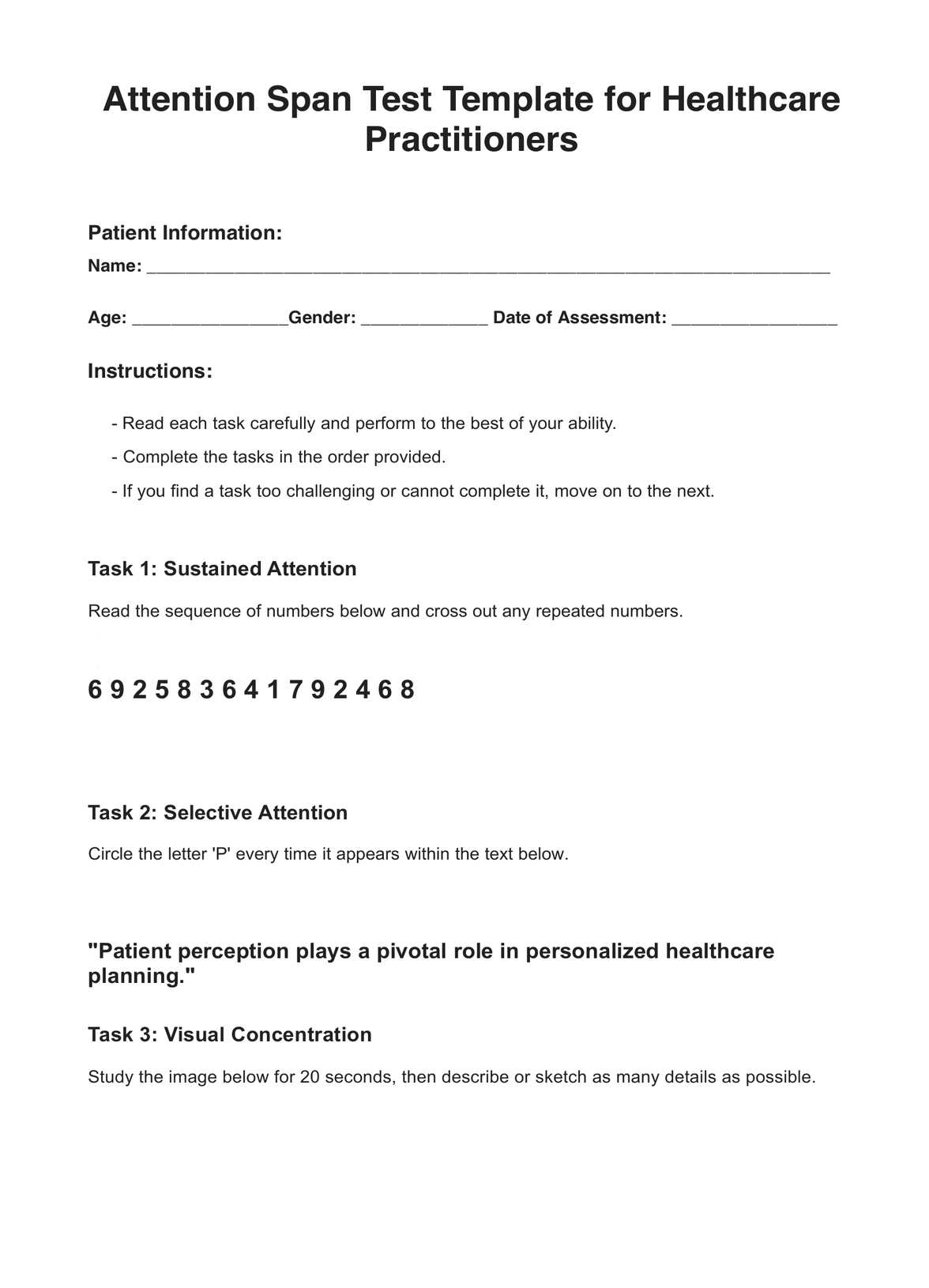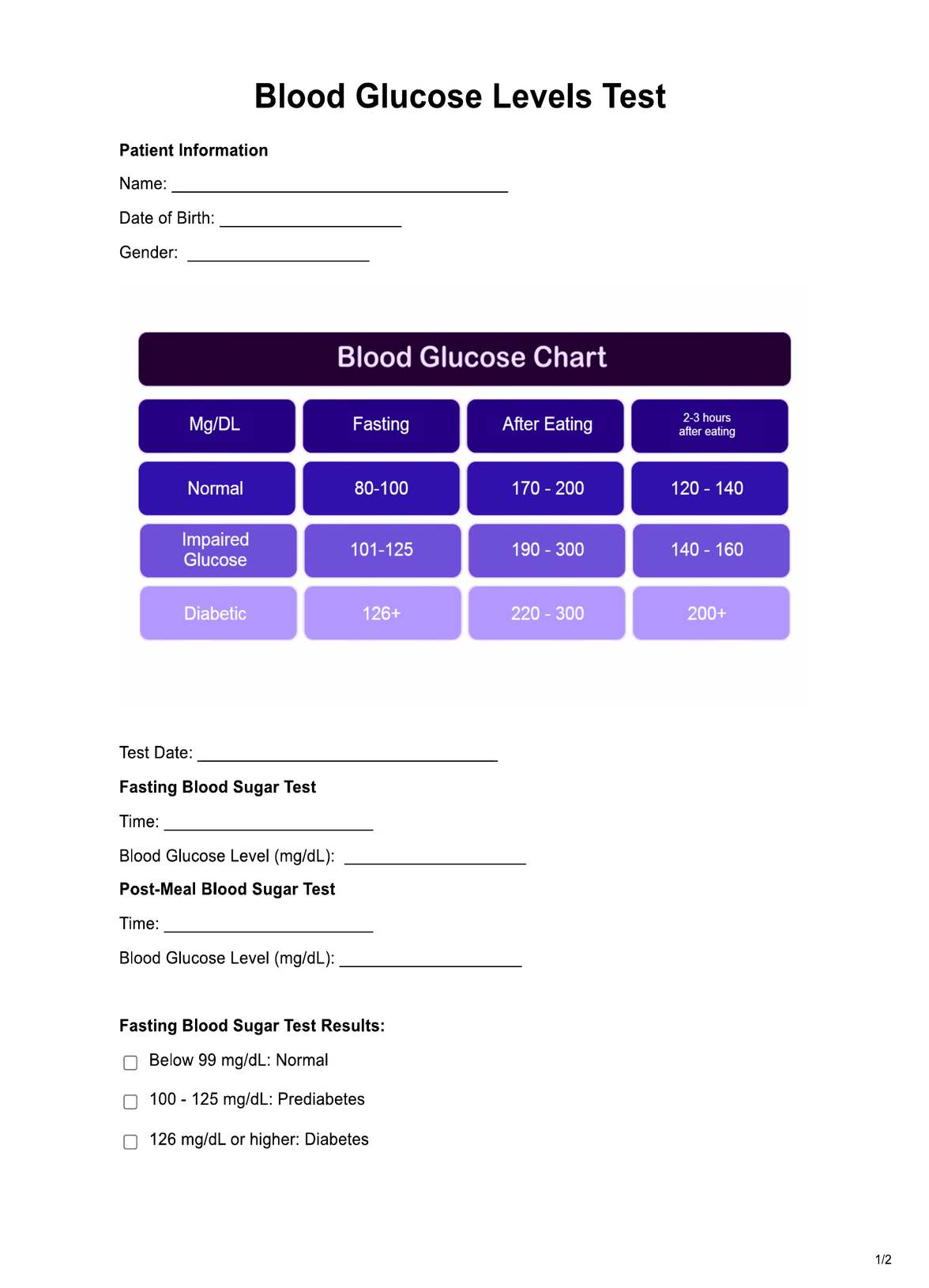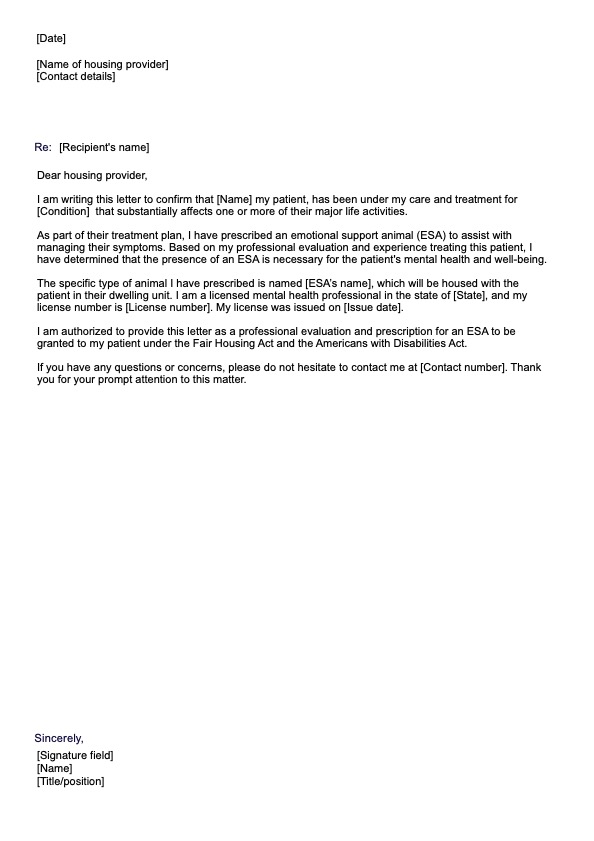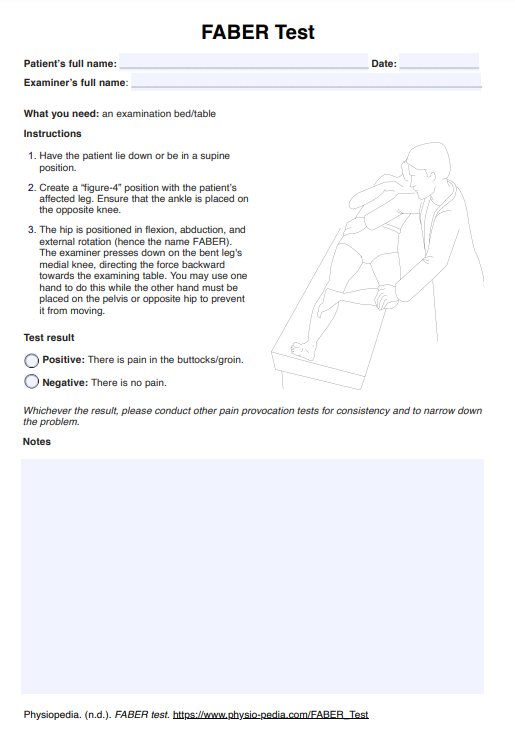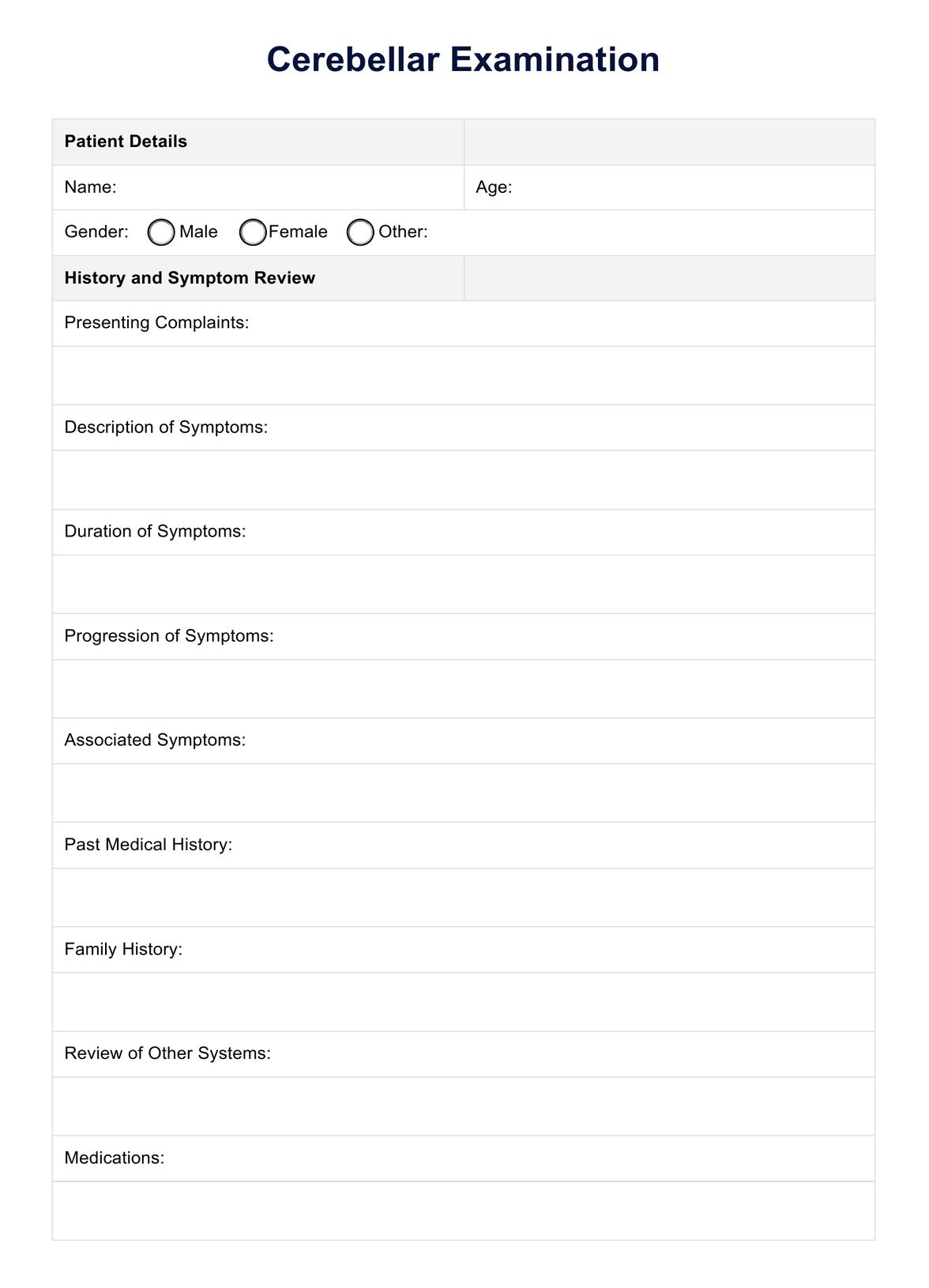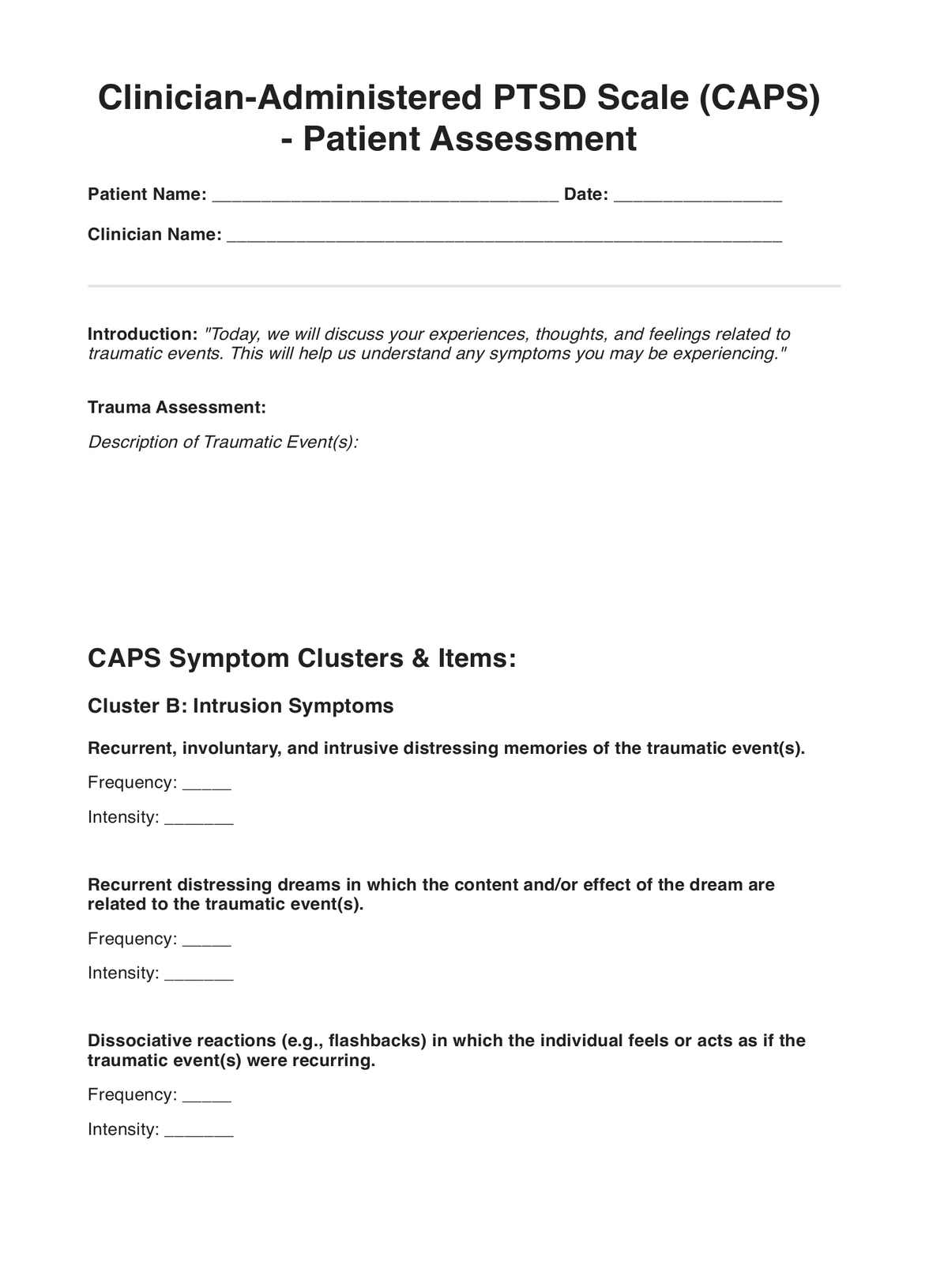CAT Q Test
Boost cognitive abilities with the Cat Q Test – your key to improved logical reasoning, analytical skills, and personal development.


What is the camouflaging autistic traits questionnaire?
The Camouflaging Autistic Traits Questionnaire (CAT-Q) is a self-report measure designed to assess the extent to which individuals, particularly those on the autism spectrum, engage in camouflaging behaviors to hide autistic traits in social situations. Camouflaging involves actively compensating for autistic characteristics, such as challenges in social interactions, by masking or assimilating into social norms. The questionnaire addresses various aspects, including social camouflaging behaviors, masking and assimilation factors, and the use of compensatory strategies for those with autism spectrum disorder.
Developed to measure both autistic and non-autistic individuals, the CAT-Q explores how people navigate social situations, covering areas like eye contact, copying body language, and forcing interactions. The questionnaire provides valuable insights into gender differences, social anxiety, and the impact of camouflaging on mental health. It also assesses factors like impression management, learning social cues, and the total CAT-Q score, offering a comprehensive understanding of camouflaging strategies.
With robust psychometric support, the CAT-Q contributes to the assessment of autism spectrum disorders by evaluating the ways individuals meet diagnostic criteria and the differences between autistic and non-autistic personas. It sheds light on the complex dynamics of social interactions, offering a valuable tool for researchers, clinicians, and individuals seeking to understand and navigate the social challenges associated with autism.
CAT Q Test Template
CAT Q Test Example
Understanding how camouflaging autistic traits works
Camouflaging autistic traits refers to individuals, particularly those on the autism spectrum, concealing or compensating for their natural behaviors in social situations to fit in and conform to social expectations. This process involves actively hiding or adapting specific autistic characteristics, such as difficulties in social interactions, communication, or sensory processing, to appear more neurotypical. Camouflaging can manifest in various ways, including mimicking others' body language, making forced eye contact, or suppressing autistic behaviors, and it is common behavior in both autistic males and autistic females.
Individuals who engage in camouflaging often develop strategies to navigate social environments, even though it may require considerable effort and energy. The motivation behind camouflaging can stem from a desire to avoid social stigma and bullying or simply to feel more socially accepted. It is a complex and nuanced phenomenon, with individuals employing different coping mechanisms to cope with significant differences and the challenges posed by their neurodivergent traits.
Understanding how camouflaging works involves recognizing the emotional and cognitive toll it can take on individuals. While camouflaging may help in specific social contexts, it can contribute to mental health challenges, including increased stress, anxiety, and feelings of social exhaustion. Acknowledging and studying camouflaging behaviors are crucial steps toward creating more inclusive and supportive environments for neurodivergent individuals, fostering a greater understanding of the diversity within the autism spectrum.
How to use this CAT-Q Test
The Camouflaging Autistic Traits Questionnaire (CAT-Q) is a self-report measure designed to assess how individuals engage in camouflaging or masking behaviors related to autistic traits. To use the CAT-Q assessment effectively, follow these steps:
- Introduce the assessment: Explain the purpose of the CAT-Q to the individual. It aims to understand their experiences with camouflaging autistic traits in social situations.
- Provide clear instructions: Ensure that the individual understands the instructions for each section of the questionnaire. Clarify any terms or concepts that might be unclear to them.
- Self-reflection: Encourage individuals to reflect honestly on their behaviors and experiences. Stress that there are no right or wrong answers, and their responses are essential for a more accurate understanding.
- Answering each section: Guide the individual through each section of the CAT-Q. Sections may cover various aspects, such as social interactions, coping mechanisms, or masking behaviors. Prompt the individual to respond based on their own experiences.
- Scoring and interpretation: Once the questionnaire is completed, assist the individual in scoring their responses. Some assessments may provide a total score or scores for specific domains. Interpret the results, emphasizing that the assessment aims to enhance self-awareness rather than judgment.
- Discussion and support: Engage in a discussion about the individual's responses. Explore how their camouflaging behaviors may impact their well-being and daily life. Offer support and discuss potential strategies for managing challenges associated with camouflaging.
- Integration into treatment: If the individual is undergoing therapy or support, discuss how the insights gained from the CAT Q scores can be integrated into their treatment plan. This might involve exploring further coping strategies or addressing specific challenges related to camouflaging.
Understanding the results
Understanding the results obtained from the Camouflaging Autistic Traits Questionnaire (CAT-Q) score involves the exploration of an individual's experiences with how they hide autistic characteristics and own social interactions. The CAT-Q provides valuable insights into how individuals navigate social interactions and employ strategies to mask or camouflage their autistic characteristics. Each section of the questionnaire contributes to an overall understanding of their coping mechanisms, social behaviors, and the impact of camouflaging on their daily life.
Upon receiving the CAT-Q score, it's essential to approach the interpretation with a person-centered perspective. A high camouflaging score may indicate a greater engagement in camouflaging behaviors, highlighting the individual's efforts to navigate social situations and mask facial expressions of certain traits. Conversely, a lower score may suggest a lower inclination or need for camouflaging, emphasizing a more authentic expression of autistic traits.
The interpretation should consider the individual's unique context and experiences, as no one person with autism acts in the same way when it comes to their social skills and behavior. A comprehensive discussion about the implications of the score can delve into aspects such as the individual's comfort level with social interactions, the perceived effectiveness of social camouflaging behaviors and strategies, and the potential impact on their mental well-being.
Understanding the CAT-Q score also opens avenues for tailored interventions and support. For individuals with higher scores, therapy may focus on enhancing social skills, fostering self-acceptance, and exploring coping mechanisms that align with their authentic self. For those with lower scores, discussions may revolve around celebrating genuine self-expression and navigating social situations authentically.
Recommended next steps
Recommended next steps after obtaining the Camouflaging Autistic Traits Questionnaire (CAT-Q) score involve a collaborative approach to support the individual's well-being and enhance their overall quality of life. For individuals with higher scores, indicating increased engagement in camouflaging behaviors, the focus may shift toward developing coping strategies prioritizing their mental health. Interventions could include targeted social skills training, self-acceptance practices, and exploring environments that encourage authentic self-expression.
For those with lower scores, the emphasis may be on affirming and celebrating their genuine selves, fostering a sense of pride in their unique autistic characteristics. Supportive interventions could involve creating spaces where they feel comfortable expressing their true identity, building confidence in their social interactions, and providing resources to navigate situations authentically.
Further steps might include regular check-ins and ongoing assessments to track the individual's progress and adjust interventions accordingly. Collaborative discussions between the individual, their support network, and clinicians can play a crucial role in shaping a holistic and person-centered approach to support. The goal is to empower individuals to navigate social situations in ways that align with their preferences, values, and overall mental well-being.
Benefits of using this assessment
- Self-awareness: The CAT-Q allows individuals to gain insight into their camouflaging behaviors, fostering self-awareness regarding their social masking tendencies and the extent to which they may hide autistic traits.
- Targeted interventions: The CAT-Q provides a foundation for targeted interventions by assessing camouflaging behaviors. It helps tailor support strategies to the individual's specific needs, whether enhancing social skills or promoting self-acceptance.
- Clinical guidance: For clinicians, the CAT-Q is a valuable tool for understanding the social experiences of individuals on the autism spectrum. It aids in developing personalized treatment plans, fostering more effective therapeutic interventions.
- Research insights: The CAT-Q contributes to the growing research on camouflaging behaviors within the autistic community. It provides valuable data to researchers studying the impact of social masking on mental health and well-being.
- Promoting acceptance: Utilizing the CAT-Q can contribute to a broader societal understanding of neurodiversity, promoting acceptance and appreciation for individuals with autism as they navigate social interactions.
Limitations of this assessment
- Subjectivity: Like many self-report measures, the CAT-Q relies on individuals' self-perception, which might be influenced by factors such as mood, current experiences, or personal biases. This subjectivity may impact the accuracy of responses.
- Social desirability bias: Individuals might provide answers that align with societal expectations or perceived norms, leading to a potential bias known as social desirability. This could affect the accuracy of responses, particularly when addressing sensitive topics like camouflaging.
- Cultural sensitivity: The CAT-Q's development and validation may not encompass cultural variations. Certain behaviors or expressions of autism may differ across cultures, impacting the questionnaire's applicability globally.
- Limited context: The CAT-Q primarily focuses on the individual's self-report, potentially missing external observations from clinicians, caregivers, or peers. A more comprehensive assessment could involve multi-perspective evaluations.
- Static nature: The assessment captures a snapshot of an individual's experiences at a specific point in time. It might not fully capture camouflaging behaviors' dynamic and evolving nature over time or across different situations.
Research and evidence
The Camouflaging Autistic Traits Questionnaire (CAT-Q) has emerged as a valuable self-report measure for assessing social camouflaging behaviors and strategies employed to compensate for or conceal autistic traits during social interactions. In a comprehensive study involving 354 autistic and 478 non-autistic adults, the CAT-Q demonstrated robust psychometric properties, with exploratory and confirmatory factor analyses supporting a three-factor structure and good model fit. The questionnaire exhibited high internal consistency, acceptable test-retest reliability, and demonstrated convergent validity through associations with measures of autistic traits, well-being, anxiety, and depression. These findings provide strong psychometric support for the CAT-Q, emphasizing its utility in understanding and quantifying camouflaging behaviors (Hull et al., 2018).
Another study, focusing on the Swedish adaptation of the CAT-Q, extended the validation efforts by assessing internal consistency, test-retest reliability, and construct validity in a diverse sample aged 10 to 83 years. While the Swedish adaptation revealed good reliability and construct validity overall, age-related variations were observed, suggesting different trajectories of camouflaging behaviors across the lifespan. Despite some validity issues in specific age groups, the CAT-Q proves to be a valuable tool for capturing and assessing camouflaging behaviors, shedding light on the complex interplay between these behaviors and mental health outcomes (Lundin Remnélius & Bölte, 2023).
Why use Carepatron as your psychology software?
In the context of utilizing Carepatron as your psychology software, the platform provides a comprehensive solution for effective practice management and clinical tools, streamlining various aspects of mental health care. Appointment scheduling is made efficient through features like online booking and reminders, ensuring a hassle-free process for both practitioners and clients. The secure storage and management of client records, including notes, progress reports, and treatment plans, contribute to an organized and centralized system, enhancing the overall quality of care.
The platform's billing and invoicing tools simplify financial processes, allowing for the seamless generation of invoices, online payment acceptance, and efficient management of insurance claims. Carepatron also facilitates telehealth, enabling secure video consultations to connect with clients remotely, increasing accessibility and flexibility in mental health care delivery.
Clinically, the software supports practitioners with psychological assessments, progress notes, and treatment plans. The client portal empowers individuals to actively engage in their care by managing appointments, accessing records, and securely communicating with practitioners.

References
Hull, L., Mandy, W., Lai, M.-C., Baron-Cohen, S., Allison, C., Smith, P., & Petrides, K. V. (2018). Development and Validation of the Camouflaging Autistic Traits Questionnaire (CAT-Q). Journal of Autism and Developmental Disorders, 49(3), 819–833. https://doi.org/10.1007/s10803-018-3792-6
Lundin Remnélius, K., & Bölte, S. (2023). Camouflaging in Autism: Age Effects and Cross-Cultural Validation of the Camouflaging Autistic Traits Questionnaire (CAT-Q). Journal of Autism and Developmental Disorders. https://doi.org/10.1007/s10803-023-05909-8
Commonly asked questions
The CAT-Q Test assesses individuals' engagement in camouflaging behaviors to hide autistic traits in social settings.
The CAT-Q Test is a self-report questionnaire for adults to reflect on their camouflaging tendencies related to autism. It can often be administered by a health practitioner or accessed online.
CAT-Q Test results offer insights into self-perceived camouflaging behaviors and their impact on overall well-being.


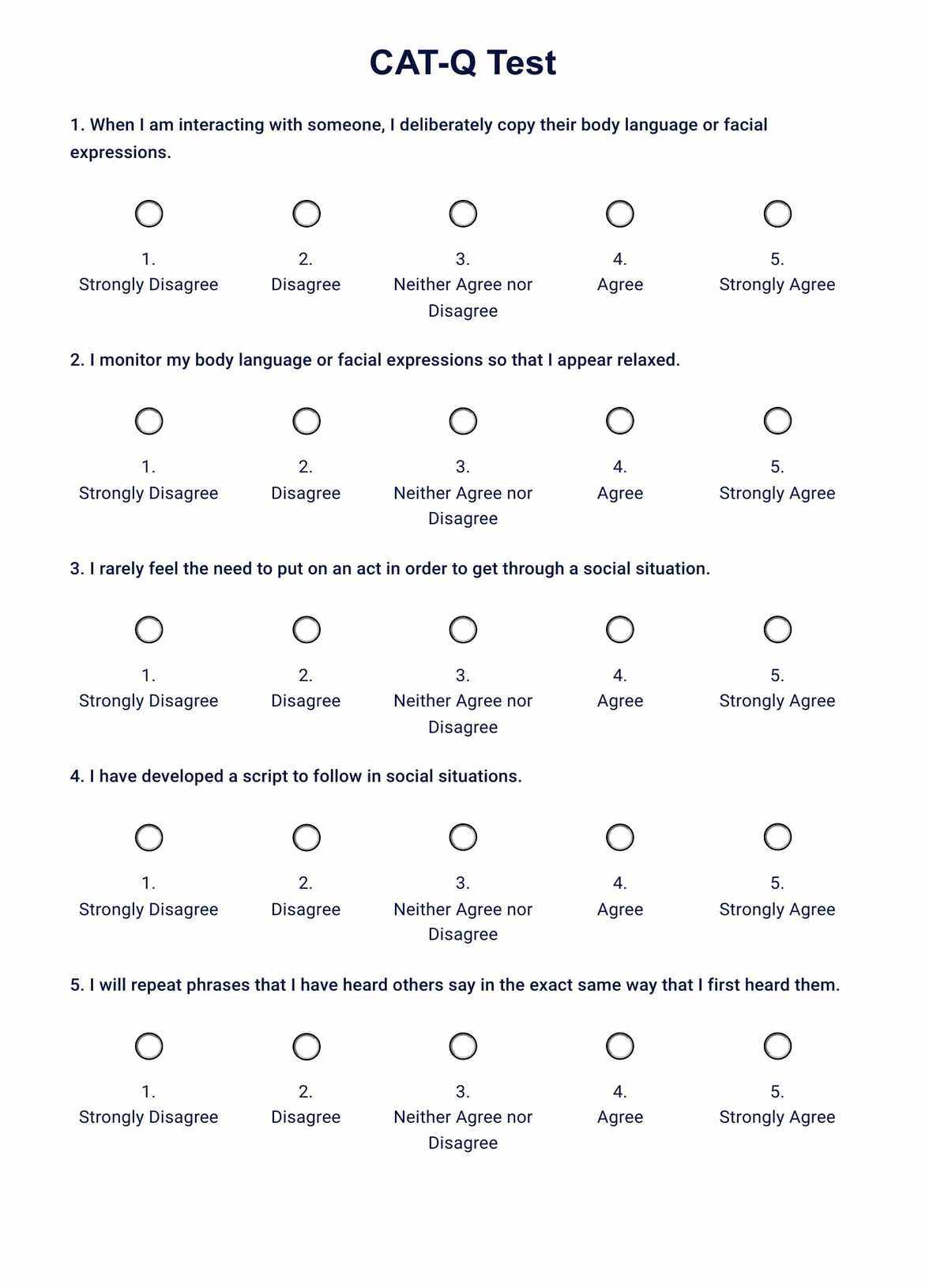






















-template.jpg)














































































